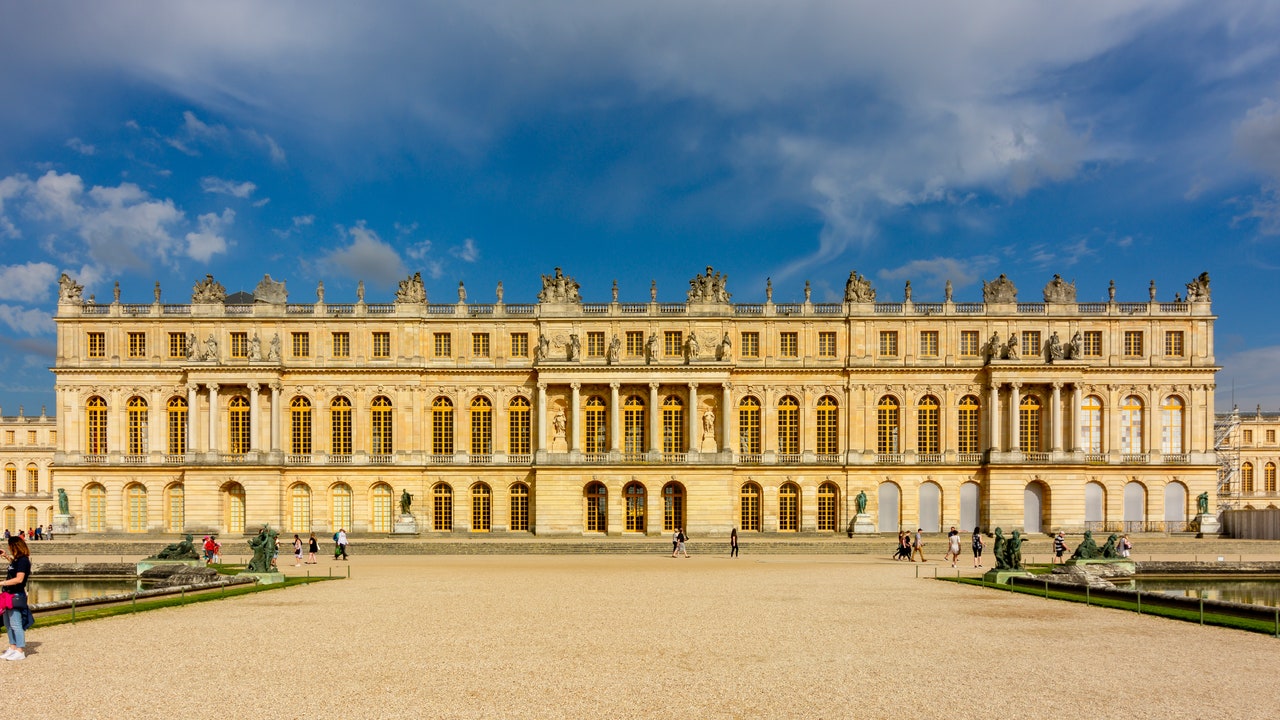Louis XIV then hired the most illustrious architects of the time for the expansion of the palace. “The most famous architect is Louis Le Vau, who is at the origin of the construction of the castle of Louis XIV and designed the envelope around the hunting lodge of Louis XIII,” says Garnier. “André le Nôtre is the architect of the French gardens. We owe the Royal Chapel, the Grand Trianon, and the Orangerie to architect Jules Hardouin-Mansart,” who succeeded Le Vau.
During the reigns of Louis XV and Louis XVI, architects Robert de Cotte, Ange-Jacques Gabriel, and Richard Mique all made significant contributions to Versailles. “Ange-Jacques Gabriel gave his name to a wing of the castle, and he built the Petit Trianon and the Royal Opera of Versailles,” Garnier notes, while Mique is responsible for the Queen’s Theatre and Queen’s Hamlet.
What are the main architectural elements of the Palace of Versailles?
Louis XIV considered replacing his father’s brick-and-stone castle—“the architects wanted him to destroy everything to rebuild a modern palace,” says da Vinha—but he ultimately decided to incorporate it into the expanded palace as an homage to Louis XIII. “He was very loyal to his father and Versailles was a symbol of his memory and his health,” da Vinha adds.
In the 1660s, Le Vau designed a feature called the “envelope,” in which Louis XIII’s old-fashioned castle was encased on three sides, giving it a new white stone Italianate façade that faces the gardens and maintaining the original façade that faces the marble courtyard. Louis XIV was displeased with the mix of materials and styles, which he made known. “He loved architecture and he used to make notes on the plans of the architects,” shares da Vinha, but attempts to reconcile the two façades were unsuccessful.
After Le Vau’s death, Hardouin-Mansart continued the envelope’s aesthetic, drawing inspiration from Renaissance-era Italian villas for his 1680s additions. In the mid-1700s, Ange-Jacques Gabriel remodeled and extended the palace in a neoclassical style.
What are the most important rooms in the Palace of Versailles?
The palace has 2,300 rooms, but a few stand out as the most spectacular. The Hall of Mirrors, for example, is a long, ornate gallery that overlooks the gardens. It was built by Hardouin-Mansart to replace a terrace that connected the king’s and queen’s apartments and exposed anyone traveling between the two to France’s unpredictable weather. The marble-clad hall features 17 arched windows opposite 357 mirrors, which majestically reflect the natural light and lush views. On the vaulted ceiling, Charles Le Brun painted an elaborate 30-scene fresco that depicts the first 18 years of Louis XIV’s military and diplomatic victories.

